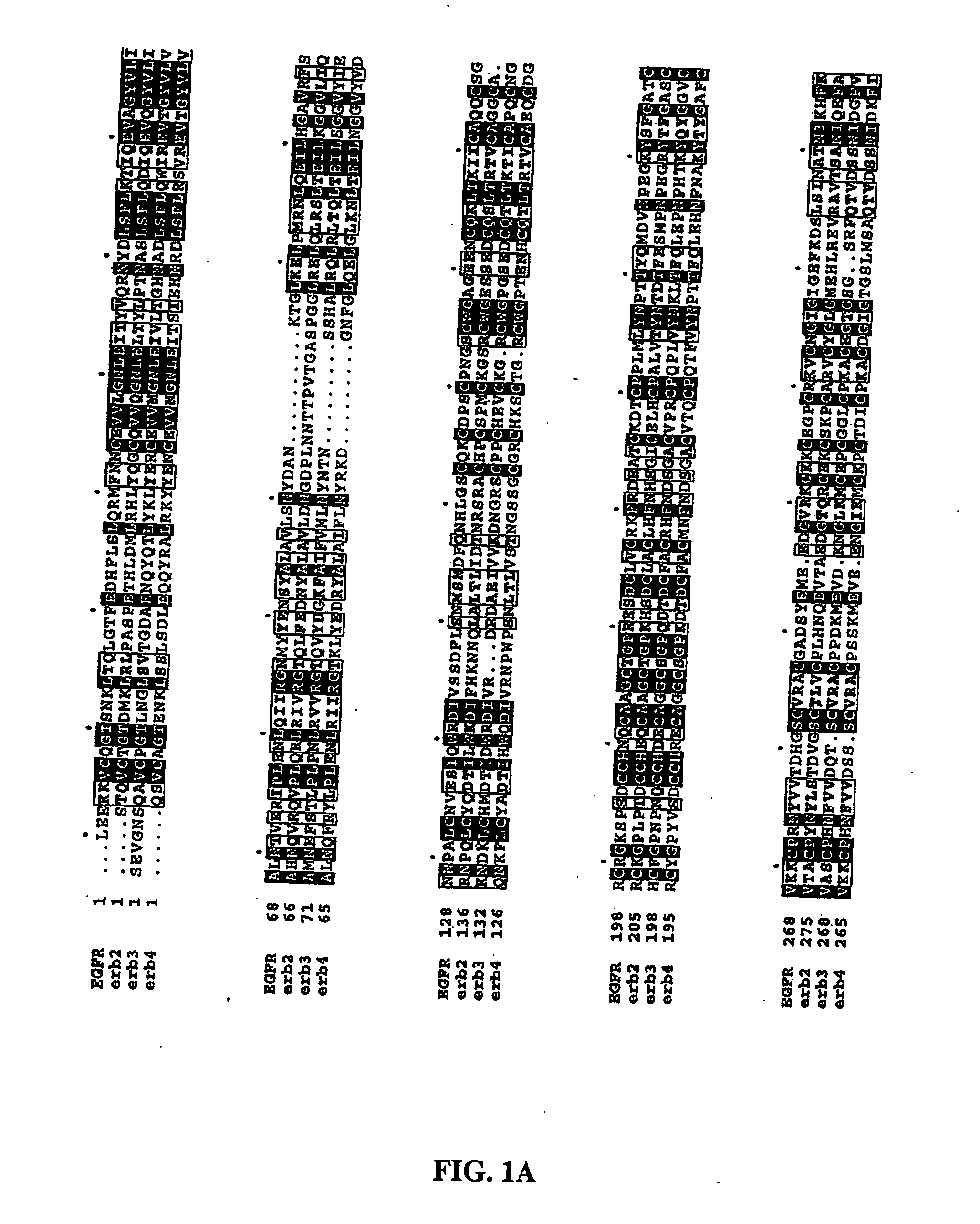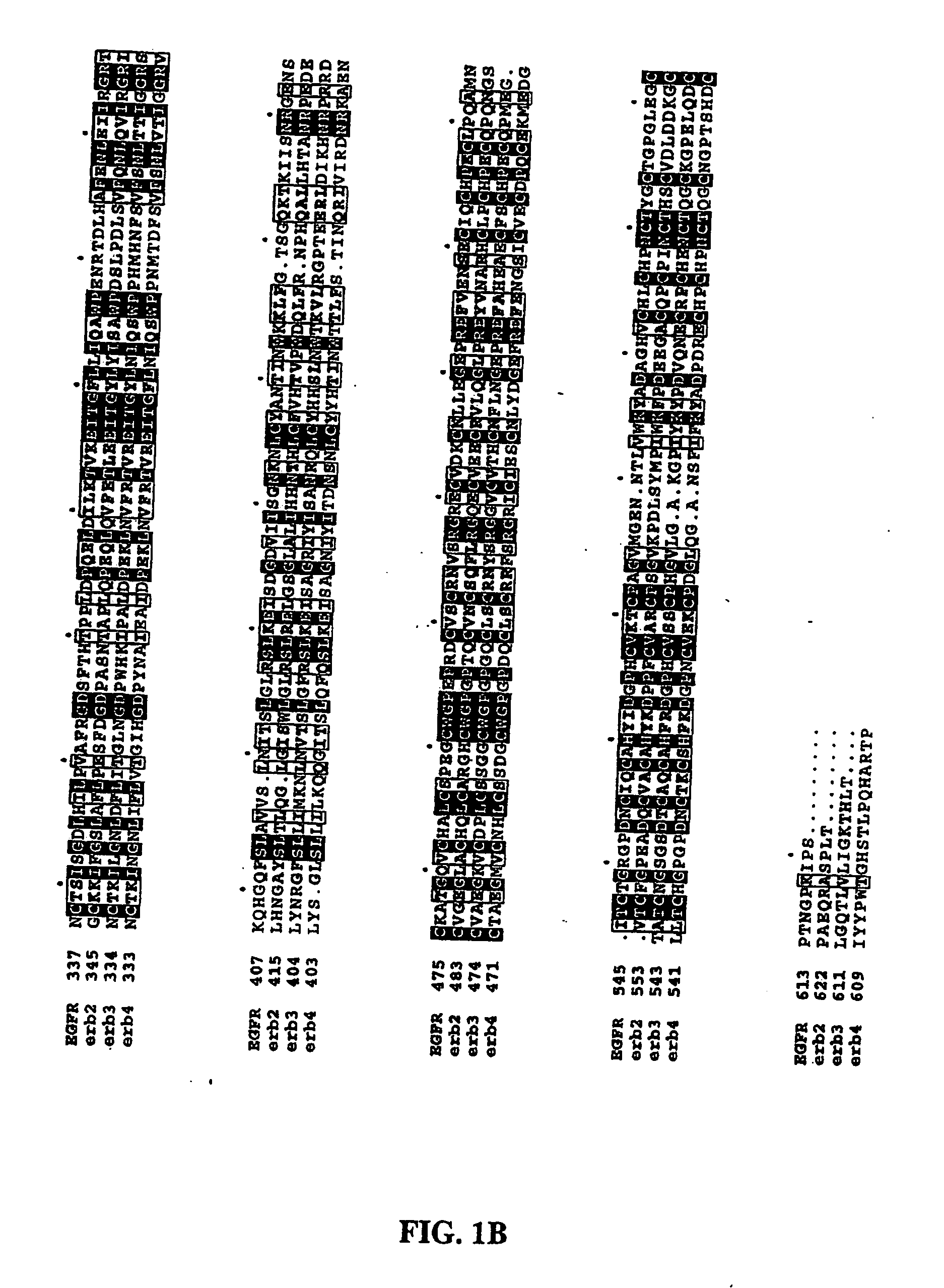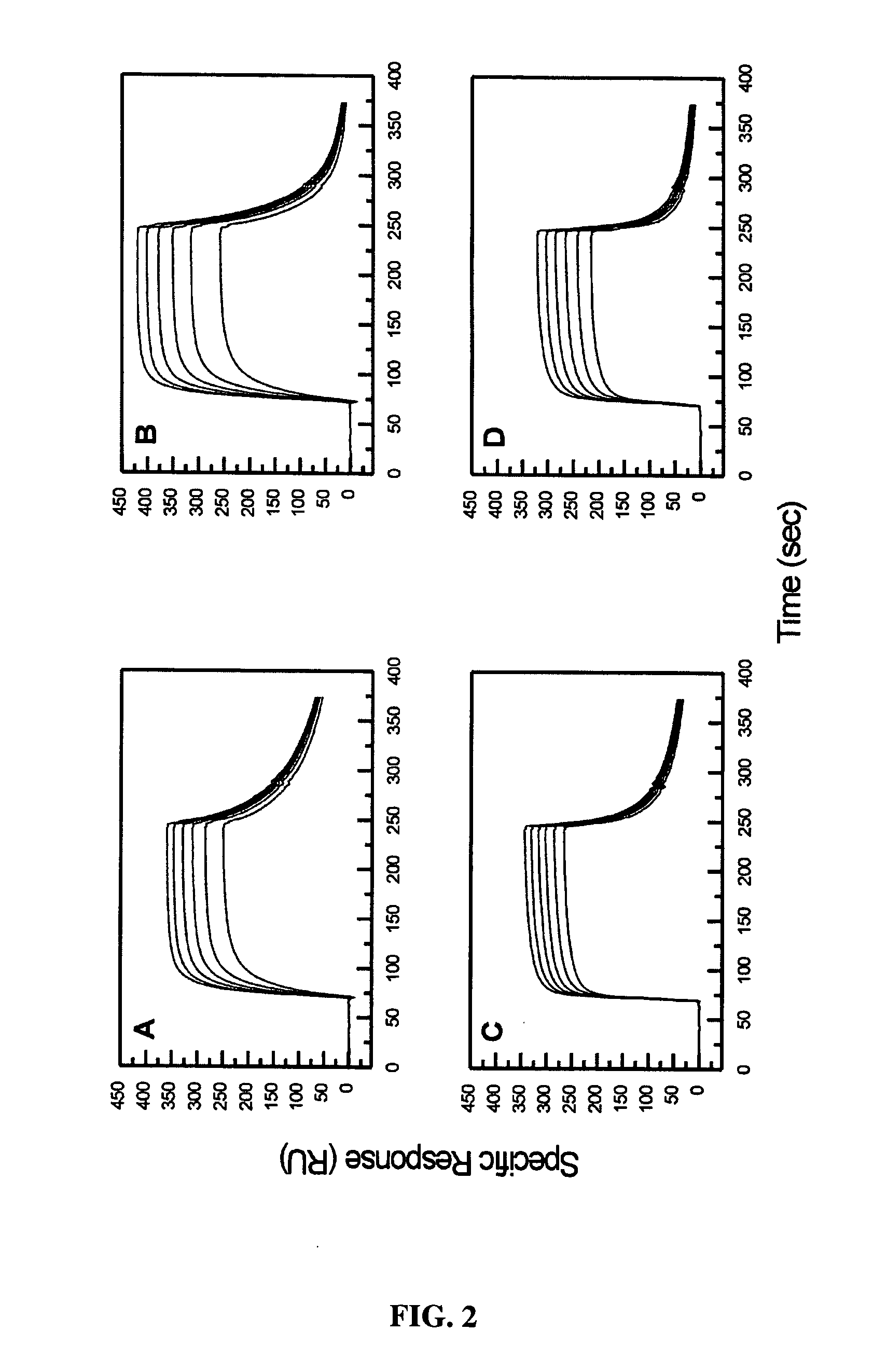Truncated EGF receptor
a technology of egf receptor and egf, which is applied in the direction of growth factor/regulator receptors, drug compositions, peptides, etc., can solve the problems that humanised mab production costs are likely to limit the application of this type of therapy, and achieve high affinity for ligands, therapeutic potential, and increased assay sensitivity.
- Summary
- Abstract
- Description
- Claims
- Application Information
AI Technical Summary
Benefits of technology
Problems solved by technology
Method used
Image
Examples
example 1
Production and Purification of Truncated EGFR Ectodomains
[0087] Preliminary analysis of conditioned media from cells transiently expressing ErbB1476, ErbB1501 and ErbB1513 showed that only the latter two truncated receptors gave detectable binding to hEGF immobilised on the BIAcore biosensor. Stably transfected Lec8 cells expressing ErbB1501, were generated and used to produce truncated receptor protein at a yield of ˜1.8 mg / L of fermentation medium for physical-chemical characterisation.
[0088] ErbB1501 purified from a Mab9E10 anti-c-myc peptide affinity column using peptide elution showed a single symmetrical peak on size exclusion chromatography (apparent molecular mass of ˜80 kDa) and migrated as a single band of ˜70 kDa on SDS-PAGE under reducing conditions. ErbB1501 gave a unique expected sequence, LEEKKVXQGT (13) on N-terminal amino acid sequence analysis, the X at cycle 7 being due to the presence of a disulphide-bonded cysteine residue at that position. The apparent molecu...
example 2
Affinity Binding of sEGFR501
[0089] The BIAcore biosensor was used to determine both the rate and equilibrium binding constants for the interaction between ErbB1501 and hEGF or hTGF-α. Full length ectodomain (ErbB1621) was used as a positive control for the surface reactivity, since this interaction has been studied in detail previously (23, 27).
[0090] Representative sensorgrams for the interaction between ErbB1501 or ErbB1621 and hEGF or TGF-α are shown in FIG. 2. Visual inspection revealed that the curves approached equilibrium over the concentration ranges tested. Additionally, the hTGF-α sensorgrams appeared to show more rapid, and virtually complete, dissociation. Thermodynamic analysis of the equilibrium binding data in Scatchard format (FIG. 3) indicated KD values of 30 and 47 nM (correlation coefficient R=0.993 and 0.999 respectively) for the interactions between ErbB1501 and immobilised hEGF or hTGF-α and 412 and 961 nM (R=0.997 and 0.999 respectively) for the correspondin...
example 3
Antagonist Activity of ErbB1501
[0092] The observation that ErbB1501 bound EGF with high affinity prompted us to test whether ErbB1501 would act as a competitive inhibitor for the mitogenic stimulation of EGFR in a cell-based assay using the BaF / 3ERX cell line. This cell line responds to mEGF with an EC50 of approximately 30 pM (FIG. 4A). The competition assay (FIG. 4B) used a constant concentration of mEGF (207 pM), which causes maximal stimulation (FIG. 4A), and varying levels (0.00045-0.5 μM) of ErbB1501, ErbB1621 or the neutralising anti-EGFR monoclonal antibody Mab528 raised against epidermal growth factor receptors on a human epidermoid carcinoma cell line, A431 (19). This antibody has been shown to prevent the growth of A431 cell xenografts, bearing high numbers of EGF receptors, in nude mice. The ErbB1501 (IC50=0.02 μM) was almost 10 fold more potent than the full-length ectodomain (IC50=0.15 μM) and approximately 3-fold more potent than the Mab528 anti-EGFR monoclonal antib...
PUM
| Property | Measurement | Unit |
|---|---|---|
| operating temperature | aaaaa | aaaaa |
| volume | aaaaa | aaaaa |
| pH | aaaaa | aaaaa |
Abstract
Description
Claims
Application Information
 Login to View More
Login to View More - R&D
- Intellectual Property
- Life Sciences
- Materials
- Tech Scout
- Unparalleled Data Quality
- Higher Quality Content
- 60% Fewer Hallucinations
Browse by: Latest US Patents, China's latest patents, Technical Efficacy Thesaurus, Application Domain, Technology Topic, Popular Technical Reports.
© 2025 PatSnap. All rights reserved.Legal|Privacy policy|Modern Slavery Act Transparency Statement|Sitemap|About US| Contact US: help@patsnap.com



